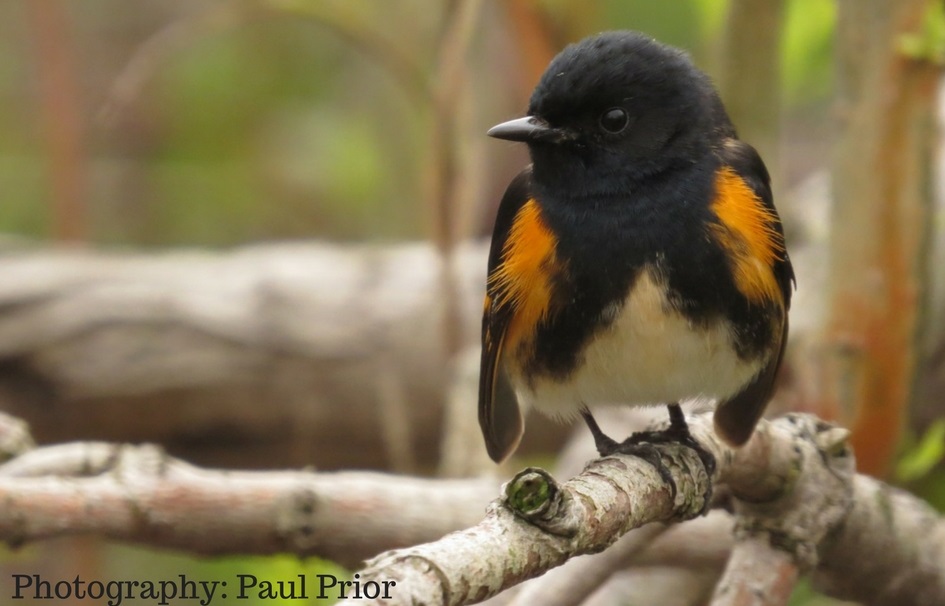The American redstart, a gorgeous little member of the wood-warbler family, appears to be enjoying a population growth here in Toronto! This striking songbird stops in the city to breed in semi-open forest and forest-edge habitats after migrating thousands of miles from its wintering grounds in the Caribbean and South America.
Since 2010, Toronto and Region Conservation’s Environmental Monitoring team have mapped a total of 45 American redstart breeding territories in the City of Toronto. That’s up from just 10 territories documented in the city between 2000 and 2010.
This increase is great news, especially given that this bird is listed by TRCA as a Regional Species of Conservation Concern.

Several monitoring sites that have been repeatedly surveyed for breeding birds are showing an increase in singing male American redstarts.
| READ: Species Spotlight: How TRCA Ranks Flora and Fauna |
For example, at G. Ross Lord Reservoir in the Don River watershed, only one male was recorded in 2004, compared to eight in 2016. Based on the distinctive plumage observed, the young male recorded in 2004 was a first-time breeder, but the majority of the redstarts reported from this site in 2016 were older, more experienced breeders. Older birds tend to return to the same breeding location year after year if conditions are suitable.
This situation is also occurring at another repeat location in Pickering, Ontario.

Breeding Bird Surveys in Toronto and Region
The American redstart is just one of 174 bird species that TRCA ecologists listen for at long-term monitoring plots in regional forests, meadows and wetlands. Breeding bird data are also collected through biological inventories and special project sites.
[advanced_iframe securitykey=”b846dca6faa2d4c5cdfef39ad6176d03cf94a66b” use_shortcode_attributes_only=”true” src=”https://www.youtube.com/embed/4pHkO5Xt-t8″ frameborder=”0″ allowfullscreen=”true” content_styles=”width:100%” width=”100%” enable_responsive_iframe=”true” iframe_height_ratio=”0.5625″]
Summary findings for bird communities show that regional population trends are relatively stable since we began monitoring, but all are showing signs of impairment — especially species that nest on the ground or in more open habitats such as meadows.
More information on bird population trends over time, and across the landscape, can be found in the Terrestrial Long-Term Monitoring Report: Spatial and Temporal Trends (2008-2014).
| READ: The Living City® Report Card 2016: Using Data to Determine the Path to Sustainability |
Through scientific data collection, TRCA’s Environmental Monitoring and Data Management team tells the stories about the changes affecting the natural areas and watercourses within our regions. For more information, please visit our website, follow us on Twitter, subscribe to our Monitoring Matters e-newsletter, or check out our YouTube playlist.
Banner image: By cuatrok77 (AMERICAN REDSTART) [CC BY 2.0], via Wikimedia Commons

